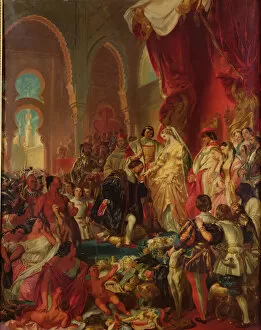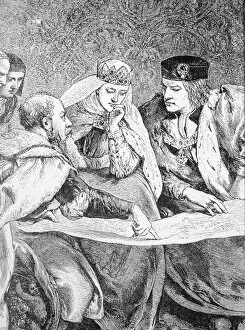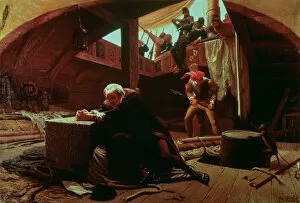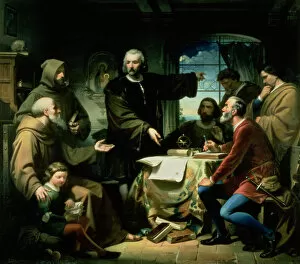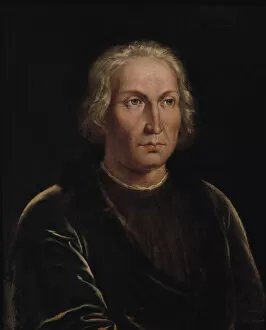Christophe Colomb Collection (page 2)
"Christopher Columbus: The Adventurous Journey to the New World" In 1492, Christopher Columbus set sail with his three ships - the Pinta, the Nina
All Professionally Made to Order for Quick Shipping
"Christopher Columbus: The Adventurous Journey to the New World" In 1492, Christopher Columbus set sail with his three ships - the Pinta, the Nina, and the Santa Maria - embarking on a historic voyage towards the West Indies. This captivating scene is beautifully depicted in "The Discovery of America, " a vibrant lithograph from 1878. With his unwavering determination and navigational expertise, Columbus discovered new lands that would forever change history. A vivid gouache map created in 1500 showcases the countries first encountered by this intrepid explorer. A vellum portrait captures Columbus' resolute gaze, reflecting his unyielding spirit as he presented his groundbreaking theories on the New World. Francisco Lopez de Gomara's engraving from 1554 immortalizes this pivotal moment when Columbus shared his discoveries with awe-struck audiences. "The Arrival of Christopher Columbus at la Rabida Monastery" depicts an emotional reunion between father and son after their arduous journey. Published in Barcelona in 1878, this lithograph evokes a sense of triumph and relief amidst their remarkable achievement. On October 12th, 1492, "The Landing of Christopher Columbus on San Salvador Island" marked a monumental milestone in human exploration. This lithograph from Barcelona transports us back to that fateful day when two worlds collided for the very first time. Before departing Palos in 1492, "Departure of the Santa Maria, Pinta, and Nina" was captured on canvas—an oil painting that encapsulates both excitement and trepidation as these vessels embarked on an unprecedented expedition into uncharted waters. Illustrated within "The Book of Discovery, " published in 1931, we witness another depiction of "The Landing of Columbus. " Through color lithography techniques employed by T. C. Bridges' artwork comes alive—showcasing bravery against adversity during this extraordinary encounter with newfound territories.

